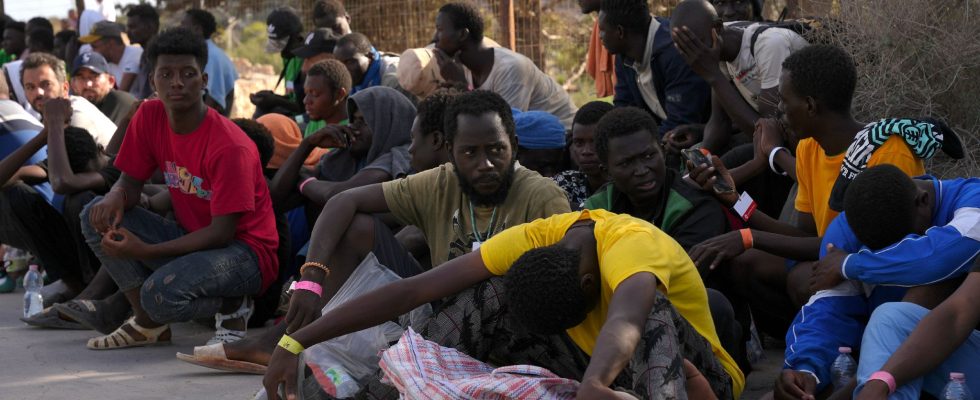“Influx” for some, “invasion” or “submersion” for others. There was no shortage of superlatives last weekend to provide a dramatic account of the situation on the Italian island of Lampedusa. It is true that the figures were impressive since, between Monday September 11 and Wednesday September 13, 199 boats docked there, with 8,500 people on board. But appearances are deceptive and the “migratory crisis” that emerged on this occasion is not necessarily what we believe.
Giorgia Meloni, the President of the Italian Council, immediately seized on the recent arrivals to make them a subject of political demands at European level. “The migratory pressure that Italy has been experiencing since the start of the year is unsustainable. It is the result of a difficult international situation,” she said. And to reprimand his Union partners on the grounds that they lack “solidarity” in terms of welcoming refugees towards his country. Mainly aimed at? Germany, which had decided a few days earlier to suspend the voluntary reception of asylum seekers, a program intended to distribute migrants recently arrived on European soil.
Except that… Germany is far from being the bad student described by Giorgia Meloni. Certainly, the geographical location makes the Boot the gateway to Europe for boats coming from Tunisia located less than 150 kilometers away, or from Libya, and forces it to react urgently. But this is only a very partial vision of the migration question. European data on the registration and granting of asylum applications looked at as a whole paint a very different landscape from that denounced by Giorgia Meloni.
Italy, too, a bad student of Dublin
In terms of emergency reception, Germany has already accepted the transfer of 1,700 asylum seekers out of the 3,500 people it had committed to welcoming. Above all, by deciding to suspend arrivals, she intends to denounce the attitude of Italy which, according to her, does not respect its own commitments. Indeed, the Boot is reluctant to examine the asylum requests of migrants arriving on its soil, even though its position as the country of first arrival obliges it to do so. According to Berlin, it is also dragging its feet in taking back asylum seekers registered by its services, as provided for in the Dublin regulation. “This part of the deal is not honored at the moment by the Italian government,” underlined a spokesperson for the Chancellery.
Above all, in the long term, Germany has no lessons to learn from any other European country. Indeed, few migrants arriving via Italy applied for asylum in this country: there were only 84,290 in 2022, compared to 243,835 in Germany and 156,455 in France, according to Eurostat. The gap is even clearer for the granting of refugee status : 7,610 only for Italy, compared to 40,910 for Germany and 29,410 in France.
Italy is therefore only in seventh position in terms of permanent reception. One thing is certain: this new crisis does not bode well for the entry into force of the “migratory pact”, painstakingly negotiated since 2020 and supposed to create a European reception solidarity mechanism. It is difficult, in fact, to talk about solidarity when many countries play a national role and do not hesitate to adjust reality to better serve their interests.
